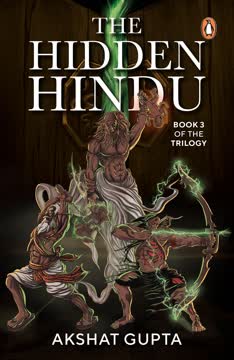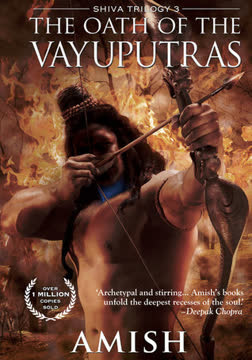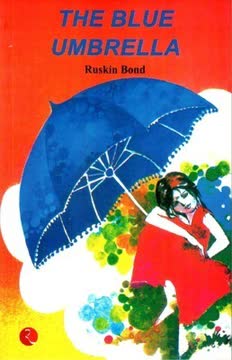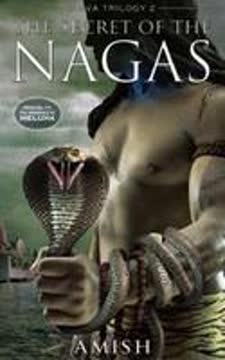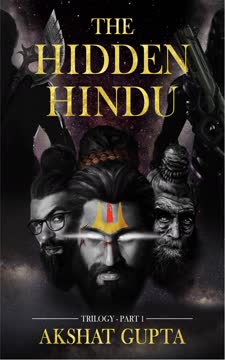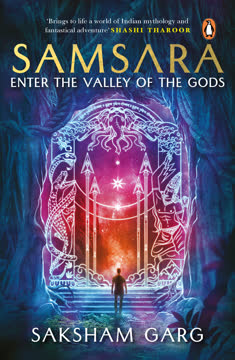Plot Summary
Kalki's Divine Awakening
In the tranquil mountains, Kalki Hari meditates before a statue of Lord Vishnu, seeking divine guidance. He experiences visions of past Avatars, realizing the weight of his destiny as the prophesied savior, the Dharm. With the mystical sword Ratna Maru, Kalki feels the burden of his role as the Avatar of Vishnu, tasked with restoring balance in a world on the brink of chaos.
Kali's Strategic Dilemma
In the desert, Kali, a cunning leader, surveys the approaching army of his rival, Vedanta. Despite his strategic prowess, Kali is troubled by the chakravyuh formation, a deadly military tactic. Consulting with his generals and allies, Kali grapples with outmaneuvering Vedanta's forces. His deteriorating health casts doubt on his ability to lead his coalition to victory.
The Gathering Storm
In Shambala, Kalki's brother Arjan learns of the impending threat from Indragarh. The villagers, led by Sarpanch Devadatta, face a choice: submit or fight to protect their sacred temple, Indravan. Inspired by Kalki and their father's memory, they rally to defend their home, crafting weapons and honing skills for the conflict ahead.
The Duel of Destiny
As Tribal forces approach Shambala, a duel is issued to decide the village's fate. Kalki steps forward, his divine strength hidden beneath a humble exterior. In brutal combat, he faces Kumbh, a swift Rakshas warrior. Kalki's supernatural power prevails, revealing his true nature as the Avatar. Victory is short-lived, as betrayal looms.
Betrayal and Capture
After the duel, Durukti, Kali's sister, orchestrates a betrayal leading to Kalki's capture. Imprisoned, Kalki encounters Symrin, a mysterious figure with cryptic knowledge of his destiny. Meanwhile, the Rakshas army prepares to invade Shambala, threatening the sacred Soma Caves. Kalki's resolve is tested as he struggles to protect his village and fulfill his mission.
Kali's Ruthless Ascendancy
After Durukti's betrayal, Kali consolidates power over Indragarh, forcing Vedanta to abdicate. His rule is marked by fear and brutality, eliminating threats and enforcing his will. Transformed by the mystical Soma, Kali becomes a tyrant, consumed by paranoia and a thirst for control, purging the city of dissenters.
Kalki's Desperate Escape
Captured and sentenced to death, Kalki faces his fate with determination. A daring rescue by Arjan, Bala, and Kripa, using a flying chariot powered by Soma, offers freedom. Despite Arjan's capture, Kalki vows to return stronger and fulfill his destiny, beginning a journey northward to seek guidance from the sage Bhargav.
Arjan's Unyielding Spirit
Imprisoned and forced into gladiatorial combat, Arjan refuses to give in, drawing strength from his love for Kalki and desire for justice. His resilience earns respect but also Kali's ire. Arjan becomes a symbol of defiance, plotting escape and embodying the spirit of resistance and brotherhood.
Padma's Moral Dilemma
Torn between revenge against Vedanta and loyalty to Kalki's cause, Padma faces a crisis of conscience. Her mission to assassinate Vedanta's daughter is thwarted by Arjan, urging her to choose redemption. Witnessing Kali's brutality, Padma questions her motives, seeking a future of hope and healing.
The Battle for Shambala
As Rakshas forces advance, Shambala's villagers, led by Arjan and Lakshmi, mount a desperate defense. Kalki's allies launch a rescue mission to free him. The battle rages, with guerrilla tactics against overwhelming might. Kalki must harness his full potential to save his people and prevent the rise of Adharm, setting the stage for an epic struggle between light and darkness.
Characters
Kalki Hari
Kalki is burdened with his divine heritage as the Avatar of Vishnu. Courageous and compassionate, he is driven by duty to protect his village and the world from darkness. Despite supernatural strength, he struggles with self-doubt, seeking guidance from past Avatars and the sage Kripa.
Kali
Once a strategic leader, Kali's transformation into a ruthless dictator is fueled by the mystical Soma. His paranoia and cruelty know no bounds, as he purges his court and enforces his will through fear. Kali's reign is marked by bloodshed and oppression, as he seeks to eliminate all threats to his power.
Arjan Hari
Imprisoned and forced into gladiatorial combat, Arjan's unyielding spirit and cunning make him a beacon of hope for those oppressed by Kali's tyranny. His love for his brother and desire for justice drive him to resist, even as he faces the brutal reality of his captivity.
Durukti
Caught between her love for her brother Kali and her disillusionment with his tyranny, Durukti faces a profound internal struggle. Haunted by her role in Kalki's capture, she seeks to atone for her past and find a path to peace and justice.
Kripa
An ancient sage with hidden wisdom, Kripa serves as a mentor to Kalki, guiding him in the ways of the Avatar. Despite his drunken demeanor, Kripa possesses deep knowledge and insight, playing a crucial role in Kalki's journey northward.
Padma
Torn between her desire for revenge and her growing loyalty to Kalki's cause, Padma grapples with a crisis of conscience. Her journey becomes one of self-discovery, as she seeks to reconcile her past with a future of hope and healing.
Symrin
A servant of Durukti, Symrin possesses cryptic knowledge of the greater cosmic struggle. Her true motives and allegiance remain uncertain, as she navigates the treacherous political landscape of Kali's court.
Vedanta
Forced to abdicate by Kali, Vedanta struggles with his loss of power and the safety of his daughter, Urvashi. His complex relationship with Kali and the political machinations of the court make him a reluctant ally in the struggle against tyranny.
Bala
Bala is a towering figure, known for his strength and loyalty to Kalki and Arjan. Despite his initial doubts, Bala proves himself a formidable fighter, using his brute force to protect his friends and village. His journey from self-doubt to heroism mirrors the larger struggle of Shambala, as he stands by Kalki in the face of overwhelming odds.
Kuvera
The Yaksha king, Kuvera, is a master of manipulation and intrigue. His alliance with Kali is one of convenience, as he seeks to expand his influence and wealth. Kuvera's loyalty is fickle, and his true motives remain shrouded in mystery.
Plot Devices
Channelling
Channelling allows Kalki to connect with past Avatars, gaining insight and guidance. This device bridges the present and past, highlighting the cyclical nature of the Avatar's journey and the enduring struggle between Dharm and Adharm. Through Channelling, Kalki gains a deeper understanding of his role and challenges.
Soma
The mystical Soma grants extraordinary abilities but drives those who consume it to madness. Its influence is central, fueling Kali's transformation and chaos in Indragarh. Soma symbolizes the duality of power and the responsibility that comes with it.
The Duel
The duel between Kalki and Kumbh highlights themes of honor, strength, and destiny. It underscores the personal stakes of the larger conflict, determining Shambala's fate. The duel reveals Kalki's true nature as the Avatar, setting the stage for the larger battle against Adharm.
The Flying Chariot
The flying chariot, powered by Soma, symbolizes hope and ingenuity. It plays a crucial role in Kalki's escape from execution, showcasing the resourcefulness and determination of his allies in the face of overwhelming odds.
Analysis
"Dharmayoddha Kalki: Avatar Of Vishnu" by Kevin Missal is a modern retelling of ancient myth, exploring themes of destiny, power, and redemption. The narrative weaves a complex tapestry of characters and conflicts, highlighting the cyclical nature of the struggle between Dharm and Adharm. Through Kalki's journey, the story examines the burden of divine responsibility and the human capacity for resilience and hope. The book's rich world-building and intricate plot devices, such as Channelling and Soma, underscore the duality of power and the moral dilemmas faced by its characters. Ultimately, the story is a testament to the enduring battle between light and darkness, and the potential for redemption and transformation in the face of overwhelming odds.
Last updated:
FAQ
Synopsis & Basic Details
What is Dharmayoddha Kalki: Avatar Of Vishnu about?
- Prophesied Hero's Emergence: The story introduces Kalki Hari, a young man from the seemingly peaceful village of Shambala, who discovers he possesses extraordinary abilities and is destined to be the final Avatar of Vishnu, tasked with combating the rising darkness.
- World on the Brink: Set in the land of Illavarti, the narrative depicts a fractured society plagued by conflict between Manavs and various Tribal factions, culminating in the tyrannical rise of Kali, a cunning leader whose power is amplified by a mysterious substance called Soma.
- Struggle for Balance: As Kali consolidates power through fear and manipulation in the city of Indragarh, Kalki must grapple with his destiny, gather unlikely allies, and confront the forces of Adharm to prevent the world from descending into a new Dark Age, while navigating personal loss and betrayal.
- Journey of Self-Discovery: Beyond the epic conflict, the book follows Kalki's personal journey from a simple village boy to a potential savior, exploring themes of identity, responsibility, and the true nature of heroism amidst a backdrop of political intrigue and ancient prophecies.
Why should I read Dharmayoddha Kalki: Avatar Of Vishnu?
- Mythology Reimagined: It offers a fresh, grounded fantasy take on the Kalki Purana and other Indian mythological references, blending ancient concepts like Avatars, Kaliyug, and tribal histories with modern fantasy tropes inspired by works like Star Wars and Game of Thrones.
- Complex Characters & Moral Ambiguity: The story features multi-layered characters like the conflicted hero Kalki, the tragically transformed villain Kali, and morally grey figures like Kripa and Durukti, whose motivations and actions spark debate and offer deep psychological insight.
- Action-Packed Plot with Deeper Themes: Beyond thrilling battles, daring escapes, and political maneuvering, the book delves into profound themes such as the nature of good and evil, the corrupting influence of power, the impact of societal prejudice, and the enduring strength of hope and loyalty.
What is the background of Dharmayoddha Kalki: Avatar Of Vishnu?
- Post-Cataclysmic Setting: The world exists long after a devastating event known as "the Breaking" and the "Mahayudh," which fractured society and led to the formation of distinct Manav and Tribal groups with deep-seated historical animosities and prejudices.
- Societal Division & Prejudice: Illavarti is marked by stark divisions between the dominant Manavs and various marginalized Tribal communities (Rakshas, Nagas, Yakshas, Asuras, Danavs, Pisaches, Vanar, Gandharvs, Apsaras, Mlecchas, Simha), whose unique characteristics, histories, and perceived evils fuel conflict and discrimination.
- Ancient Lore & Prophecy: The narrative is steeped in the idea of cyclical ages (Yugs), the concept of Dharm (righteousness/hero) and Adharm (unrighteousness/evil), and the prophecy of Vishnu's Avatar returning to restore balance, drawing heavily on interpretations of the Kalki Purana and Mahabharata/Ramayan references.
What are the most memorable quotes in Dharmayoddha Kalki: Avatar Of Vishnu?
- "Fear now, for he was coming.": This opening line, referring to Kalki, immediately establishes a tone of impending change and the formidable nature of the protagonist, setting the stage for his arrival as a force of destiny.
- "Change is scary but good. Always good.": Spoken by Kali to King Vedanta during their truce negotiation, this quote encapsulates Kali's manipulative philosophy of imposing his will under the guise of progress, highlighting his cunning and the deceptive nature of his rise to power.
- "A hero isn't born. He's made. Through people, through journeys and most of all, through tragedy.": Sumati Amma's poignant words to Kalki after his father's death define the core theme of heroism in the book, suggesting that true strength and purpose are forged through hardship and connection, not inherent power.
What writing style, narrative choices, and literary techniques does Kevin Missal use?
- Fast-Paced, Action-Oriented Prose: Missal employs a direct and often visceral writing style, particularly in action sequences and descriptions of violence, keeping the narrative momentum high and focusing on immediate sensory details and character reactions.
- Multiple Perspectives & Shifting Focus: The narrative frequently shifts perspective between key characters like Kalki, Kali, Durukti, Arjan, and Padma, offering a panoramic view of the unfolding events and allowing readers insight into their diverse motivations and internal struggles, though sometimes abruptly transitioning.
- Integration of Myth and Fantasy Tropes: The author blends elements of traditional Indian mythology (Avatars, Yugs, specific deities and tribes) with established fantasy conventions (chosen one, magical substances, political intrigue, diverse races), creating a unique hybrid genre that feels both ancient and modern.
Hidden Details & Subtle Connections
What are some minor details that add significant meaning?
- Shuko the Parrot's Intelligence: Kalki's parrot, Shuko, initially seems like a simple pet, but his ability to understand commands, identify people ("LADY! LADY! TALL LADY!"), and even retrieve keys reveals an unusual intelligence, hinting at a deeper connection to the mystical elements of the world or Kalki's own nature.
- The Significance of Scars: Recurring mentions of scars (Kalki's face, Arjan's face, Martanja's eye, the unseen manipulator's forehead) serve as visual motifs representing past trauma, transformation, and identity, marking characters who have faced significant hardship or possess hidden power/knowledge.
- The Smell of Soma: The description of Soma as having no smell when liquid but producing fragrant blue fumes when burned or used in the Vimana highlights its unnatural properties and distinguishes its mystical energy from ordinary substances, emphasizing its 'out of this world' nature.
What are some subtle foreshadowing and callbacks?
- Kripa's Knowledge of the Chakravyuh: Kripa's casual mention of knowing the Chakravyuh formation and how to defeat it ("You hit the heart") foreshadows his true identity as an ancient warrior/strategist (Kripacharya) with knowledge from past ages, far beyond that of a simple drunkard.
- The Silver-Haired Assassin Motif: The recurring mention of a silver-haired figure (seen by Vedanta's prostitute witness, Padma herself) subtly links Padma to the assassination of Vedanta's ministers before her identity is fully revealed, establishing her as a capable, albeit morally ambiguous, operative.
- Kali's Visions of Burnt Siblings: Kali's feverish visions of his burnt siblings demanding he "Honor your roots. Seek your heritage" foreshadow his eventual embrace of his Asura identity and his quest to understand his past, revealing the personal trauma driving his tyrannical actions.
What are some unexpected character connections?
- Kripa's Link to Kalki's Father: The revelation that Kripa knew Kalki's father, Vishnuyath, before Kalki was born, and was involved in Vishnuyath giving Soma to Sumati Amma, creates an unexpected historical connection that explains Kalki's powers and Vishnuyath's cryptic knowledge, tying Kalki's origin directly to Kripa's ancient mission.
- Padma's Southern Heritage: Padma's full name, Padmavati, and Arjan's recognition of it as a "Dakshini name" subtly links her to the South (Eelam, Rakshas territory), hinting at a deeper background potentially tied to the conflicts or cultures of that region, contrasting with her current role in Indragarh.
- Symrin's True Allegiance: Symrin, initially appearing as Durukti's loyal handmaiden, is revealed to be a spy working for an unseen "Master" with a scar, orchestrating events like Kali's poisoning and guiding Durukti to the Soma, making her a hidden antagonist manipulating key players from within Kali's court.
Who are the most significant supporting characters?
- Kripa Acharya: More than just a guide, Kripa is a Chiranjeev (immortal) from a previous age, tasked with preventing the rise of Adharm. His ancient knowledge, cynical wisdom, and manipulative actions (orchestrating Vishnuyath's kidnapping) are crucial to Kalki's journey and understanding of the larger conflict.
- Durukti: Kali's sister is a pivotal figure whose love for her brother drives her to desperate actions (seeking Soma, capturing Kalki). Her internal conflict, eventual disillusionment with Kali's tyranny, and complex relationship with Kalki make her a tragic and significant character caught between loyalty and morality.
- Arjan Hari: Kalki's adopted brother embodies resilience and unwavering loyalty. His journey from dependable villager to scarred survivor and resourceful ally is central to Kalki's emotional arc, and his capture by Kali sets up a major plot point for future conflict.
Psychological, Emotional, & Relational Analysis
What are some unspoken motivations of the characters?
- Kali's Quest for Legitimacy: Beyond power, Kali's actions are driven by a deep-seated need to prove the worth of the Tribals and himself, stemming from historical prejudice and the trauma of his past, seeking not just control but validation for his people and his own identity as an Asura.
- Durukti's Desire for Control: While seemingly motivated by love for Kali, Durukti also exhibits a need to control situations and people (her manipulation of the Shambala invasion, her attempts to control Kalki), perhaps a coping mechanism developed from surviving trauma and living in a chaotic world.
- Padma's Search for Purpose: Padma's relentless pursuit of revenge against Vedanta is a clear motivation, but her willingness to shift allegiances and her moments of vulnerability (crying for Arjan) suggest a deeper, unspoken need for belonging and a cause to believe in after losing her family.
What psychological complexities do the characters exhibit?
- Kali's Descent into Paranoia and Sadism: Kali's transformation is marked by increasing paranoia (spying on allies, killing perceived threats) and sadism (impaling the propagandist, enjoying the wrestling matches, torturing Arjan), suggesting a mind warped by power, illness (Soma effects?), and unresolved trauma from his past.
- Arjan's Struggle with Trauma and Identity: Arjan's scar is a physical manifestation of his trauma, impacting how others see him and how he sees himself ("I always tried to be your real son, but I failed"). His journey involves grappling with fear, guilt, and his adopted identity while finding inner strength.
- Kripa's Cynicism vs. Underlying Hope: Kripa presents as a cynical, detached drunkard who orchestrates events and speaks of the world's inherent badness. However, his actions (saving Kalki, guiding Arjan) and occasional moments of genuine emotion reveal an underlying, perhaps reluctant, hope and belief in the possibility of good.
What are the major emotional turning points?
- Vishnuyath's Death: This event is a major turning point for both Kalki and Arjan, transforming Kalki's initial reluctance into a burning desire for revenge and forcing Arjan to confront the harsh realities of violence and loss, solidifying their bond and setting them on their respective paths.
- Durukti's Betrayal of Kalki: Durukti's decision to capture Kalki, despite his saving her life earlier, marks a critical emotional shift, highlighting the depth of her loyalty to Kali (or her perceived need to save him) and creating a profound sense of betrayal for Kalki, complicating their future interactions.
- Lakshmi's Death: Lakshmi's death is arguably the most impactful emotional turning point for Kalki, shattering his innocence, fueling his rage, and solidifying his resolve to fight against the forces responsible, transforming his quest from one of duty to one deeply personal and driven by grief.
How do relationship dynamics evolve?
- Kalki and Arjan's Brotherhood: Their relationship evolves from that of a dependable younger brother and a carefree older brother to a bond forged in shared trauma and mutual protection, where Arjan's resilience inspires Kalki and Kalki's strength protects Arjan, culminating in Arjan's sacrifice.
- Kali and Durukti's Twisted Love: What begins as a seemingly unconditional sibling bond transforms under Kali's tyranny and Durukti's manipulations. Their relationship becomes a complex mix of love, fear, suspicion, and control, highlighting how power and circumstance can corrupt even the deepest familial ties.
- Kalki and Kripa's Mentor-Student Bond: Their relationship starts with Kalki's suspicion of the eccentric drunkard Kripa. It evolves into a mentor-student dynamic based on shared purpose and Kripa's guidance, though Kalki's distrust of Kripa's methods and hidden motives adds tension and complexity.
Interpretation & Debate
Which parts of the story remain ambiguous or open-ended?
- The Identity of the Scarred Master: The figure with the scar across the forehead, revealed to be Symrin's "Master" and the orchestrator of many events (Kali's poisoning, guiding Symrin), remains unnamed and his ultimate goals are unclear, setting him up as a major antagonist for future books.
- The Full Extent of Soma's Effects: While Soma is shown to grant power and cause madness/physical transformation (Kali, Martanja), the exact mechanism, long-term effects, and whether it affects Dharm and Adharm differently remain partially ambiguous, leaving room for further exploration of its nature.
- The Fate of Arjan and Padma: The book ends with Arjan captured and Padma escaping after witnessing his potential death. Their ultimate fates and whether they will reunite with Kalki are left open, creating suspense for the continuation of the series.
What are some debatable, controversial scenes or moments in Dharmayoddha Kalki: Avatar Of Vishnu?
- Kali's Impalement of the Propagandist: Kali's brutal public execution of a young man for sedition, impaling him as a gruesome example, is a shocking and controversial display of his tyrannical cruelty, sparking debate about the nature of his rule and the justification of fear as a tool of control.
- Durukti's Use of Villagers to Move the Boulder: Durukti forcing the captured Shambala villagers to physically move the boulder blocking the Soma Caves, resulting in some being trampled, is a morally questionable act that highlights the lengths she will go to for her goal, even at the expense of innocent lives.
- Padma's Attempt to Kill Urvashi: Padma's plan to kill Vedanta's innocent young daughter as revenge is a controversial moment that pushes the boundaries of her character's morality, raising questions about whether her quest for vengeance has consumed her and if any act is justifiable in war.
Dharmayoddha Kalki: Avatar Of Vishnu Ending Explained: How It Ends & What It Means
- Kalki's Escape and New Path: The book concludes with Kalki escaping execution via a Soma-powered flying chariot orchestrated by Arjan, Kripa, and Padma. This signifies Kalki embracing his destiny and leaving his past behind to seek training with Bhargav Ram in the North, marking the true beginning of his journey as the Avatar.
- Loss and Sacrifice Fuel the Hero: Kalki's escape comes at a heavy cost: the deaths of Bala and Ratri, and the likely capture or death of his beloved brother Arjan. This tragic outcome underscores the theme that heroism is forged through sacrifice and loss, deepening Kalki's resolve and providing him with powerful motivation to confront Kali and the Adharm.
- Adharm's Rise and Unseen Manipulation: Kali consolidates his power, becoming king through fear and eliminating rivals like Vasuki, while his physical transformation (dark skin, baldness, red eyes) hints at Soma's corrupting influence and his potential as the Adharm. The final scene reveals a hidden manipulator (Symrin's Master) with a scar, suggesting the true Adharm or a major antagonist is still operating in the shadows, having orchestrated key events to set the stage for the coming conflict.
Review Summary
Dharmayoddha Kalki is a mythological fantasy novel that has received mixed reviews. Many readers praised its fast-paced plot, vivid world-building, and engaging characters, particularly enjoying the blend of mythology and fiction. The book's cover and action scenes were also highly regarded. However, some critics noted grammatical errors, predictable storylines, and an overwhelming number of characters. Despite these issues, many readers found the book captivating and eagerly anticipated the sequel, comparing it favorably to other popular mythological fiction works.
Similar Books
Download PDF
Download EPUB
.epub digital book format is ideal for reading ebooks on phones, tablets, and e-readers.

